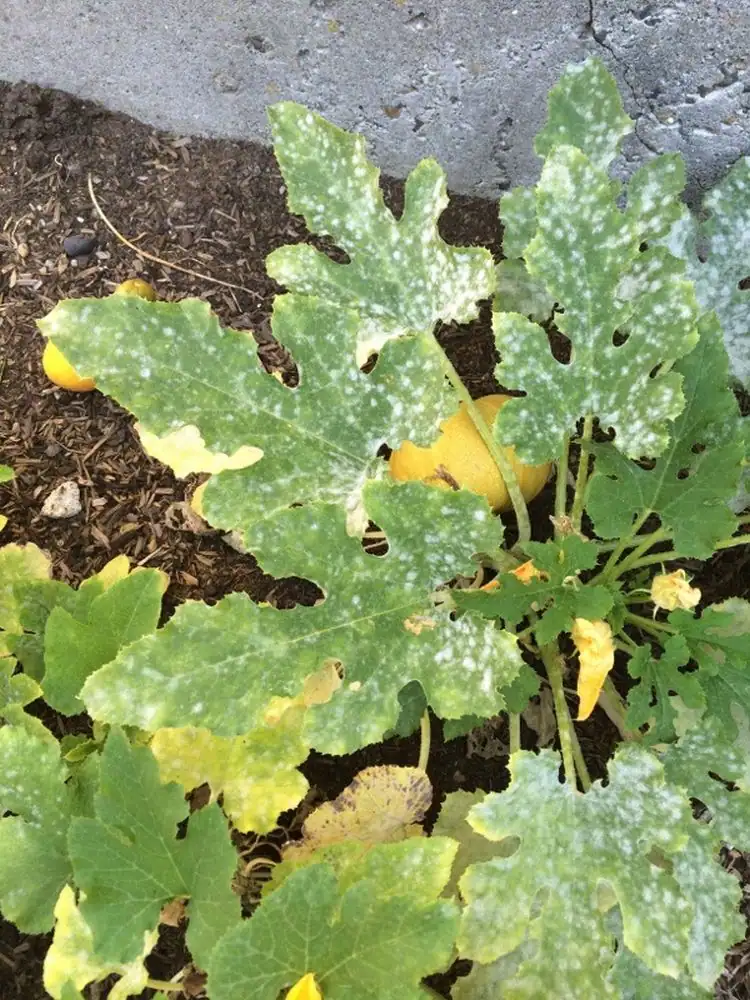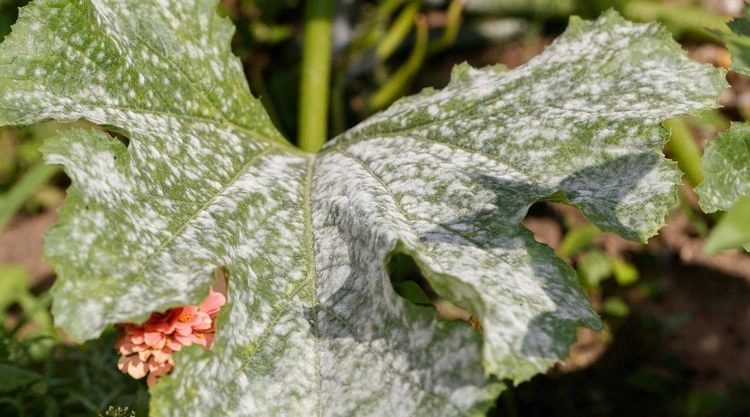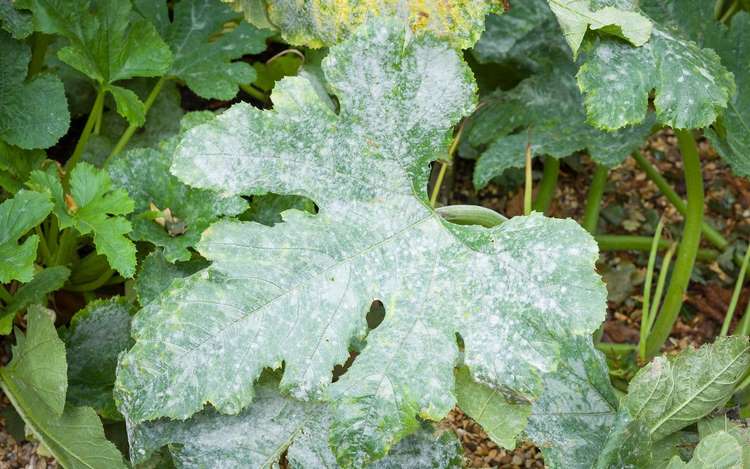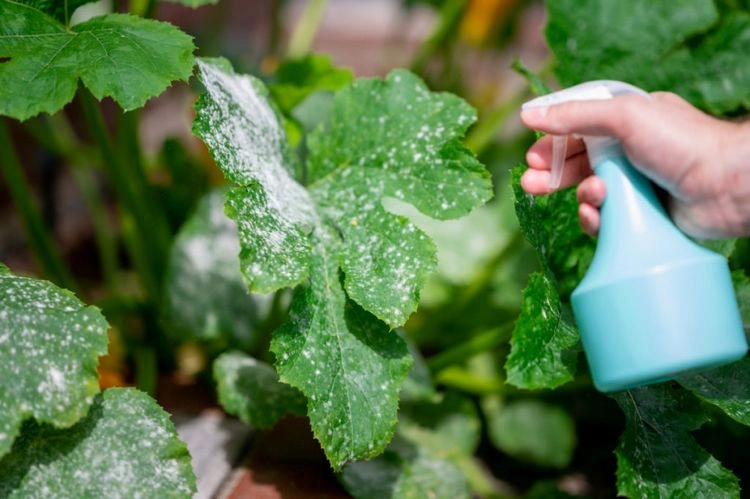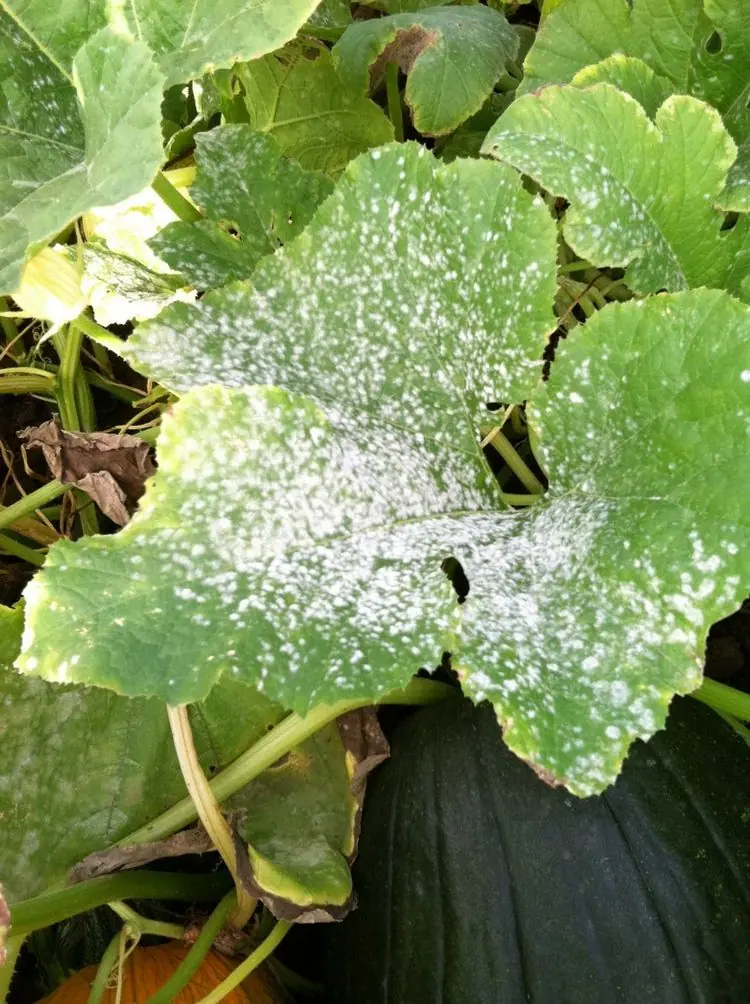You’re excited that you can finally enjoy fresh, home-grown zucchini. Then you head out into the garden and find that your normally green and bright zucchini leaves are losing their luster and white spots are appearing all over the leaves. Unfortunately, your zucchini has probably just fallen victim to powdery mildew. Here’s how to identify, treat, and prevent powdery mildew on zucchini.
Zucchini Diseases: What Is Powdery Mildew?
Powdery mildew is caused by a variety of fungal spores that get onto plants through the air and through spraying up from the ground when it rains. The fungus is not harmful on its own, but once it gets onto your plants, it will germinate and begin sucking nutrients from the surface of the plant’s leaves. In the final stages of powdery mildew infection, the zucchini leaves turn yellow and crusty, they shrivel and die.
Powdery mildew is one of the most common plant diseases and because it is so distinctive in appearance it is relatively easy to spot. This plant disease makes the leaves look like they have been dusted with talc. They are white to gray and the disease tends to appear in summer. Most of the white dust consists of spores, which are easily carried by the wind to other nearby leaves.
Powdery mildew likes little light and temperatures of 20°C – 30°C with high humidity (over 95%). However, if the temperature rises above 32°C, some of the spores will die.
Zucchini Leaves Turn White: Prevention and Control
What Helps Against Powdery Mildew On Zucchini?
A simple way to combat powdery mildew is to keep the foliage of the plants as dry as possible. This means you should always water the base of the plant, rather than wildly spraying the garden with a hose.
Air Circulation Is Particularly Important
Good air circulation is also important, so you should arrange the space for your plants in the garden appropriately. Every plant needs enough space to grow and if you give it some space, the stems and leaves will dry out faster after a downpour. Also, make sure your plants get plenty of sunlight.
Appropriate spacing also prevents powdery mildew from spreading to a neighboring plant.
Cut Off Infected Leaves with White Spots
Cut off leaves that show signs of infection as soon as possible. Throw them in the trash and don’t leave them on the compost heap. Remove and destroy any infected plants at the end of the growing season to get rid of as many spores as possible.
Cut off half the leaves from each plant early in the season to reduce the humidity around the plant and reduce the chance of infection.
Fertilize Zucchini Properly
Do not use nitrogen fertilizer in the middle of the growing season. This triggers a new growth spurt that increases susceptibility to this disease.
Home Remedies for Powdery Mildew on Zucchini – Buttermilk Spray
Using a diluted milk solution in organic gardening has long been known and used to treat a variety of plant problems. Why are milk and buttermilk effective in treating fungal diseases of plants? The exact reason is not known. There are different opinions about how much one should dilute milk solutions. There is significantly less information about the correct ratio for diluting buttermilk.
The most effective dilution that has been tried is to use 1 part buttermilk to 3 parts water. Simply add 60ml buttermilk and 180ml water to a spray bottle and shake the solution well. Spray the top and bottom of all zucchini leaves every 2-3 days until mildew is gone.
Fight Powdery Mildew Naturally With Baking Soda
Another common remedy for mildew is baking soda. Add 1 teaspoon to 1 liter of water and spray the plant thoroughly.
Neem Oil as a Natural Remedy for Powdery Mildew on Zucchini
Neem oil is also a common organic treatment for treating fungal diseases on plants. Derived from the seeds and fruits of the tropical neem tree, neem oil is widely used as a pesticide. It is best used as a prevention, before the powdery mildew becomes too severe. Be careful when using neem based products as they are mildly toxic to fish and other aquatic life. Do not spray when bees are active.
Zucchini Leaves Have White Spots – Treat With Vinegar
It’s a fairly simple remedy: you need 1 liter of water and 1/2 tablespoon of vinegar. Fill a spray bottle with the water and vinegar solution and leave it in your garden. Spray the top and bottom of the leaves once a week. The reason for this spray’s effectiveness is quite simple. Mildew can’t grow in a humid environment, and the vinegar changes the pH of the water and.

